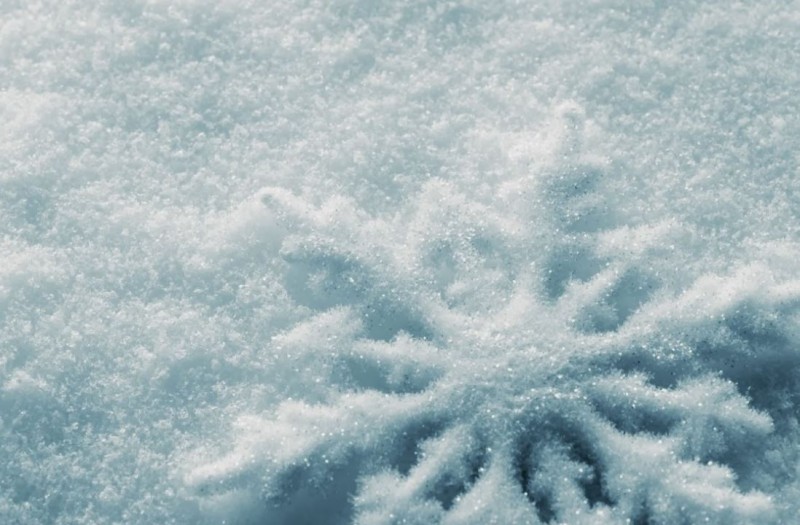
Snowflakes are delicate, intricate structures that captivate our imagination with their unique beauty. Each snowflake carries a mesmerizing pattern, and it's hard not to marvel at their elegance as they descend from the sky. However, have you ever wondered how big a snowflake can actually get? In this article, we will explore the remarkable story of the largest snowflake ever recorded, measuring a remarkable 15 inches wide.
1. Introduction: The Beauty of Snowflakes
Snowflakes are nature's delicate masterpiece, formed when water vapor freezes into ice crystals in the atmosphere. These crystals intricately arrange themselves into captivating shapes, resulting in the unique and diverse patterns we associate with snowflakes. No two snowflakes are exactly alike, and their intricate beauty has fascinated scientists and artists alike for centuries.
2. Snowflake Formation: Nature's Artistry
The journey of a snowflake begins high in the sky within a cloud. When the temperature drops below freezing, water vapor condenses onto tiny particles, such as dust or pollen, forming the initial crystal. As the crystal falls through the cloud, it collects more water vapor, causing it to grow in size and complexity. The intricate patterns we see in snowflakes are a result of the environmental conditions and the crystal's unique growth process.
3. The Remarkable Discovery of the Largest Snowflake
In January 1887, during a snowstorm in Fort Keogh, Montana, the largest snowflake ever recorded was discovered. According to witnesses, the snowflake measured an astonishing 15 inches wide. This remarkable find left scientists in awe, sparking a quest to understand how such a large snowflake could form.
4. Unraveling the Mystery: How Did It Grow So Large?
The formation of a snowflake requires a delicate balance of temperature, moisture, and atmospheric conditions. Various factors can contribute to the growth of a snowflake, including supersaturation, which occurs when the air is so moist that it exceeds its capacity to hold water vapor.
5. The Influence of Temperature and Moisture
Temperature plays a crucial role in determining the size of a snowflake. Warmer temperatures promote faster crystal growth, resulting in larger snowflakes. Moisture levels also influence snowflake size, with higher humidity leading to larger crystals.
6. The Role of Atmospheric Conditions
Atmospheric conditions, such as wind patterns and turbulence, can affect the growth of snowflakes. These factors can cause a snowflake to experience irregular growth, leading to unique and asymmetrical shapes.
7. Comparing the Largest Snowflake to Average Snowflakes
The largest snowflake ever recorded, at 15 inches wide, is exceptionally rare. Most snowflakes are significantly smaller, typically ranging from 0.1 to 0.4 inches in diameter. The colossal size of the largest snowflake sets it apart from the average snowflake we encounter during winter.
8. The Impact of Snowflake Size on Snowfall
The size of snowflakes directly affects the overall snowfall accumulation. Larger snowflakes have a higher water content, resulting in heavier and denser snowfall. In regions where large snowflakes are prevalent, snow accumulation can quickly reach significant depths.
9. Snowflakes and Climate Change
As our climate continues to change, it raises questions about the impact on snowflake formation. Scientists are studying how rising temperatures and changing atmospheric conditions might affect the size, shape, and overall frequency of snowflakes. Understanding these changes is vital for predicting weather patterns and comprehending the broader implications of climate change.
10. The Fascination with Snowflakes: Scientific and Aesthetic Perspectives
Snowflakes have long fascinated scientists and artists alike. From a scientific standpoint, studying snowflakes provides valuable insights into crystal growth, atmospheric conditions, and physics. On the other hand, snowflakes also captivate our aesthetic sensibilities, inspiring artists, photographers, and poets to capture their intricate beauty.
11. The Art of Snowflake Photography
Photographing snowflakes requires skill, patience, and attention to detail. With the right equipment and techniques, photographers can capture the astonishing beauty of individual snowflakes. Macro lenses, specialized lighting, and a steady hand are essential tools for photographers seeking to immortalize these ephemeral wonders.
12. Capturing the Beauty: Tips for Photographing Snowflakes
To photograph snowflakes, it's essential to have a well-lit background that contrasts with the crystal's intricate details. Using a macro lens allows for capturing the fine intricacies, and a tripod ensures stability during the photography process. It's also advisable to work in a controlled environment to protect the fragile snowflakes from melting too quickly.
13. The Symbolism of Snowflakes
Snowflakes often carry symbolic meaning in various cultures and belief systems. They are often associated with purity, uniqueness, and the transient nature of life. Snowflakes can evoke a sense of wonder and remind us of the beauty found in the fleeting moments of existence.
14. Fun Facts About Snowflakes
No two snowflakes are identical.
On average, a snowflake falls for about one hour before reaching the ground.
The largest snowflake ever recorded weighed around 0.5 grams.
The record for the most snowflakes seen in 24 hours is held by Mount Rainier in Washington, with an astounding 1,140,000 snowflakes observed.
Snowflakes can take various shapes, including needles, columns, plates, and dendrites.
15. Conclusion
The largest snowflake ever recorded, measuring 15 inches wide, stands as a testament to the awe-inspiring wonders of nature. Snowflakes, with their intricate designs and delicate beauty, continue to capture our imagination and remind us of the mesmerizing complexity found in the world around us.
Landmark Move: U.S. Senate Committee Backs India, Recognizes Arunachal Pradesh as Integral Part!
India's Next Moon Mission, Chandrayaan-3, Setting for Launch
Delhi HC Dismisses Plea to Postpone UPSC Mains Exam Amidst Pandemic